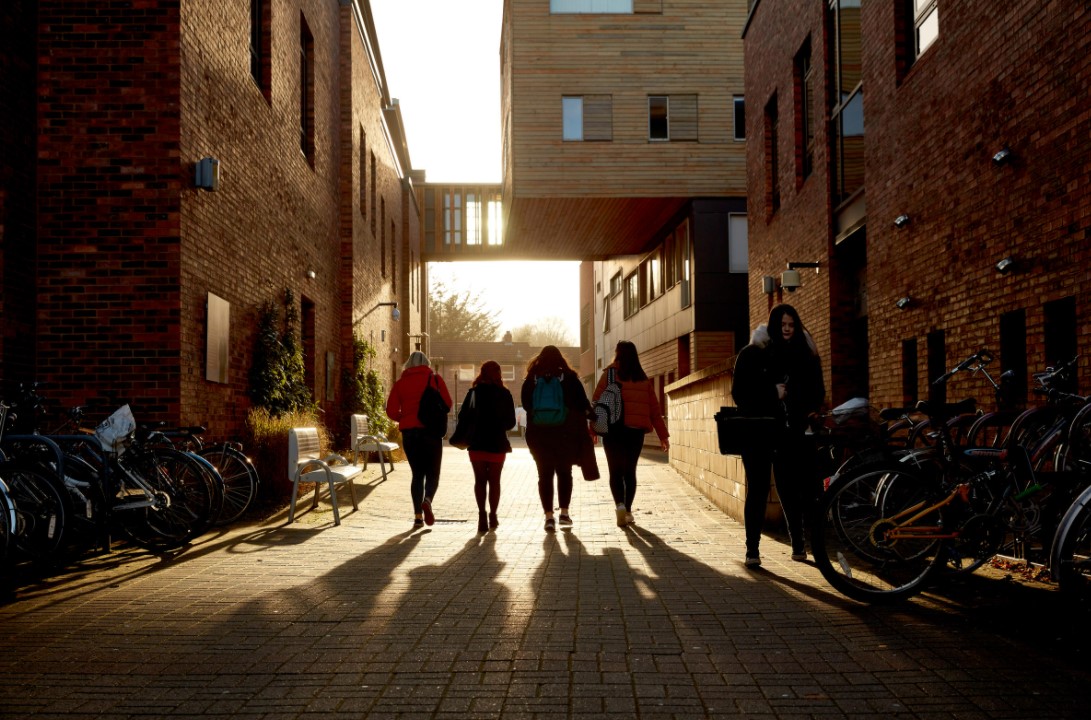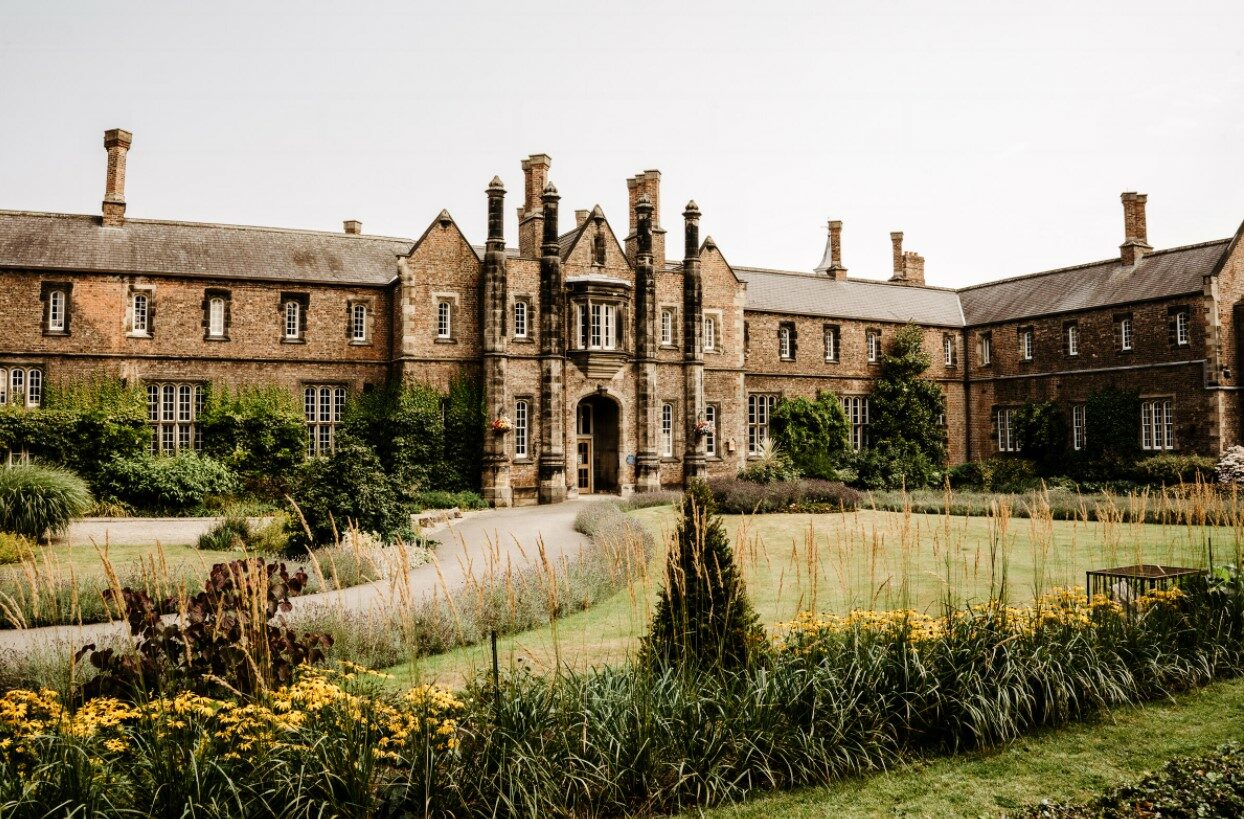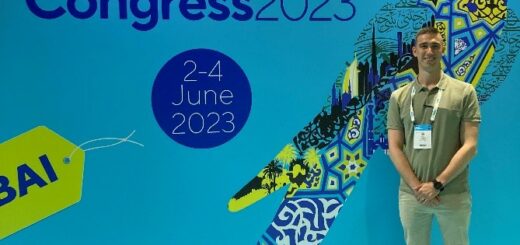Talk About Teaching Conference Follow Up
March 1, 2023
Samantha Goddard, a PGR in the School of ELP, discusses her presentation at the Talk about Teaching Conference 2023 here at YSJ.
Following my previous write up about my workshop for the Talk About Teaching Conference 2023 at York St John University, I wanted to write a short follow up about presenting at academic conferences as an early career researcher, and how the day went.
 I was really nervous about contributing to TAT23, as the conference was mostly being delivered by staff and experienced lecturers and researchers at York St John. The first 6 months of my PhD have been a real whirlwind, and carving out time for presenting at events can feel overwhelming, but it’s always been a goal of mine (even before starting my PhD) to build my skills in presenting at academic conferences. I love learning for learning’s sake, and though full day in person conferences can often be really intense, heavy days, I always leave feeling inspired and having made new friends and connections. The TAT conference team approached me to see if I’d like to be involved after reading a previous online PGR blog about my current research, as the theme this year for TAT was mental health. I’ve just started data collection, and my scoping review isn’t finished yet, but after some reflection on previous conference presentations I’ve given, and conversations I’ve had with staff and students at YSJ, I had a hunch that people were in need of permission to think about their own wellbeing. I spent some time speaking with my supervisors and some other post graduate researchers, and decided to create some reflective practice space in the day.
I was really nervous about contributing to TAT23, as the conference was mostly being delivered by staff and experienced lecturers and researchers at York St John. The first 6 months of my PhD have been a real whirlwind, and carving out time for presenting at events can feel overwhelming, but it’s always been a goal of mine (even before starting my PhD) to build my skills in presenting at academic conferences. I love learning for learning’s sake, and though full day in person conferences can often be really intense, heavy days, I always leave feeling inspired and having made new friends and connections. The TAT conference team approached me to see if I’d like to be involved after reading a previous online PGR blog about my current research, as the theme this year for TAT was mental health. I’ve just started data collection, and my scoping review isn’t finished yet, but after some reflection on previous conference presentations I’ve given, and conversations I’ve had with staff and students at YSJ, I had a hunch that people were in need of permission to think about their own wellbeing. I spent some time speaking with my supervisors and some other post graduate researchers, and decided to create some reflective practice space in the day.
 Using art materials and creativity as a language and tool to explore complex problems is at the core of how I practice as someone with an arts background, and as an art psychotherapist. I’ve taught creative reflective practice and arts based action research techniques to students of various levels and professionals in various disciplines. It always makes me a little nervous. Often we have an expectation of how lessons or presentations should look and feel, so asking people to make art with me can often make me feel like I’m not quite hitting the brief - but part of me quite likes disrupting those expectations by asking people to approach problems in a different way. It has led me to work with teams of mental health practitioners and even trainee doctors by presenting them with tables full of art materials and supporting them not to write or debate, but to create together. It usually elicits one of two responses from people at the start of a presentation: abject discomfort and cynicism, folded arms, and the age old “oh I’m not creative, good luck getting anything out of me!”, or visible glee and deep sighs of relief and tension melting from people’s shoulders: “What’s all this? This is exactly what I needed today, I’m so burnt out, this is such a welcome break”. My workshop at Talk About Teaching began just like this.
Using art materials and creativity as a language and tool to explore complex problems is at the core of how I practice as someone with an arts background, and as an art psychotherapist. I’ve taught creative reflective practice and arts based action research techniques to students of various levels and professionals in various disciplines. It always makes me a little nervous. Often we have an expectation of how lessons or presentations should look and feel, so asking people to make art with me can often make me feel like I’m not quite hitting the brief - but part of me quite likes disrupting those expectations by asking people to approach problems in a different way. It has led me to work with teams of mental health practitioners and even trainee doctors by presenting them with tables full of art materials and supporting them not to write or debate, but to create together. It usually elicits one of two responses from people at the start of a presentation: abject discomfort and cynicism, folded arms, and the age old “oh I’m not creative, good luck getting anything out of me!”, or visible glee and deep sighs of relief and tension melting from people’s shoulders: “What’s all this? This is exactly what I needed today, I’m so burnt out, this is such a welcome break”. My workshop at Talk About Teaching began just like this.
The lovely bunch who attended were incredibly supportive and engaged. We came together after lunch, after a busy morning the morning with an opening talk from Dr Theo Gilbert from the University of Hertfordshire which tackled understandings of compassion in groups, anthropology and neuroscience, and various panel talks and presentations spanning academic tutoring, coaching, student wellbeing, the challenges facing international students, post graduate researcher wellbeing, and how to effectively support students going on clinical placements. The thread that tied everything together was that good mental health is a challenge for everyone involved in academia, with pressures coming from a wide variety of sources. In the midst of striking staff, the still very real effects of the COVID19 pandemic, and a cost of living crisis, there was agreement that staff and student retention, attendance, physical health, safety, and wellbeing are huge challenges in higher education.

I love learning for learning’s sake, and though full day in person conferences can often be really intense, heavy days, I always leave feeling inspired and having made new friends and connections.
After introducing my own research and professional background, I gave everyone space to dive into piles of Play Doh and to create their own life raft - or an object they’d take on their life raft. The prompt was simple: think about a challenge you’re facing, or a concept from the conference, and play. I always get butterflies at this point. As someone with an anxiety disorder, and the inevitable imposter syndrome (that only seems to grow rather than dissipate the further I progress in my career) I always have a moment where I think the room is going to grind to a halt. Yet every time, people dive straight in. Choosing simple materials like Play Doh, though it may sound childish, is a conscious decision - there’s something deeply permissive and gentle about materials we may remember from childhood. They’re equalising - nobody expects perfection or the pressure to produce gallery worthy sculptures or paintings when you’re finger painting or moulding coloured plasticine. It’s multi sensory too, and very flexible. Often in our adult lives, it’s only through parenting or supporting others we get the excuse to let our inner child out. The enthusiasm in the room for a bit of time to process the day and the issues that had been discussed was obvious, and the ways people chose to sped their time were really intriguing.
I’d separated the room into small groups, so people were working together and could share materials and discuss the process as they went along. As I moved from table to table to check in with everyone, there were a variety of approaches to my brief, and in the time at the end we had for questions and feedback, people were, in some cases, surprised at what had come up for them. It’s amazing sometimes how short, creative exercises can help us to tap into unconscious processes we weren’t aware were happening. One group had come together to create a “York St John boat”, each member creating something to help keep it afloat and resourced, prompting discussions about the institution they’re a part of. One person on the table reflected that they’d seen this, but found themselves wanting to create their own raft, and that they’d come to realise just how burnt out and in need of some introverted time they were. Others made items for their students or thought about ways to integrate the theory into their courses, but had struggled to put their own wellbeing forefront in their mind - despite knowing just how important it is. As often happens with workshops such as this, a few people stayed behind as others were leaving to say how they wished academic conferences had more variation like this, and how much they were struggling and had needed the permission to do something practical and relaxing. It got me wondering if every conference would benefit from a play space. Perhaps it would help to visualise the themes we discuss, share ideas, and provide well needed diverse ways to learn and talk that are difficult for people who are anxious, tired, sensorially overwhelmed or who think and understand in divergent ways?
As someone with an anxiety disorder, and the inevitable imposter syndrome (that only seems to grow rather than dissipate the further I progress in my career) I always have a moment where I think the room is going to grind to a halt. Yet every time, people dive straight in.

I ended the workshop by gifting pots of Play Doh and sculpting tools to anyone who wanted to keep them, to put on their desk as a reminder of the day. I’d explained that over my professional career I’ve build up a literal tool box - a big metal trunk filled with art materials, prompt cards, photo elicitation tools, etc. - that sits in my office, close to hand, so when I’m grappling with something or I hit writers block I have things to hand to mix things up a bit. Later in the day, people found me again, to say how lovely it was to spot pots of Play Doh being carried around. Despite my nerves around doing something a little out of the ordinary, it seemed to have filled a gap that people were craving, and it was a really wonderful experience. It’s a drop in the ocean, and as I explained in my talk, individual actions alone can’t be expected to overturn systemic issues, but I hoped to create a space where people felt like they could communicate. The workshop participants shared that having art materials to play with together was like a sort of social glue - it prompted discussions to emerge in a more relaxed way as they had something to focus on together, and people said they were able to talk in an easier way than if the materials and ask had not been there.
To anyone in the York St John post graduate community, there’s a lot of peer support and encouragement out there to help you build your confidence. The conference team were incredibly supportive during the whole process, and it’s left me enthusiastic about my next conference submission. It’s also a fantastic way to network and meet new people at your university or in your research community, and to receive ideas and feedback that can lead to future collaborations (many thanks to those who sent me further research, recommendations and suggestions of people to read from other institutions!). For now, I’m doing my best not to go down a research rabbit hole into the benefits of implementing creative reflection spaces in conferences, but perhaps it’s a gap that might bring a wider range of people to these events. Thank you to everyone who attended, and I’ll look forward to sharing more of my research as it progresses.

To anyone in the York St John post graduate community, there’s a lot of peer support and encouragement out there to help you build your confidence.




